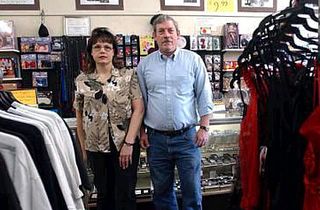Still More Reading: McCarthy on Dilution
The Trademark Reporter has made available on-line, Professor J. Thomas McCarthy's recent article entitled "Dilution of a Trademark: European and United States Law Compared", 94 Trademark Reporter 1163 (November-December 2004). McCarthy's comments and observations are well worth reading. This brief note will focus on his views regarding American dilution law.
McCarthy observes that, in this country, the almost 400 reported judicial decisions (trial and appellate) interpreting the FTDA have shed "more heat than light" on the meaning of the anti-dilution law. He says that, in his experience, the concept of dilution has created more "doctrinal puzzlement and judicial incomprehension" than any other part of trademark law. That should make us all breathe a little more easily as we grapple with the FTDA.
McCarthy finds the Supreme Court's decision in Moseley v. V Secret Catalogue, Inc. to be "terse and cryptic." In his view, the Court created confusion regarding the type of proof required to establish a dilution claim, particularly when the marks at issue are not identical. Apparently, in such cases, mental association is not enough to prove actual dilution, and additional proof (in the form of expert testimony and survey evidence) will be needed. How much will be needed remains unclear.

More generally, his view is that dilution law should stick rather closely to the proposal originally set forth in the seminal article by Frank I. Schechter, "The Rational Basis of Trademark Protection," 40 Harv. Law Rev. 813 (1927), reprinted in 60 Trademark Reporter 334 (1970): "The Schechter proposal for a new form of protection was limited to situations where the junior mark was identical, when the famous mark was coined or arbitrary and only if the uses were on non-competing and non-similar goods or services."
McCarthy believes that the "extraordinary remedy of an anti-dilution law requires evidentiary rigor by the courts." If a "likelihood of dilution" standard is adopted, as urged by many trademark practitioners, judges should demand "persuasive evidence" that dilution is "probable." That proof should be actual evidence, not mere "theoretical assumptions about what possibly could occur or might happen."
A mark should not be deemed "famous" under the FTDA unless that fame extends throughout a "substantial portion" of the United States. As to "niche" market fame, he repeats his position that the "super weapon" of dilution need not be invoked when "garden variety infringement" principles (i.e., likelihood of confusion) would seemingly suffice.
In short, Professor McCarthy believes the anti-dilution remedy "should be viewed as a unique legal tool to be used only in an unusual case." It should be "reserved for a small, elite group of truly renowned marks," and a violation of the law "should be proven only by an unambiguous case resting on a solid evidentiary base."
It is expected that Congress will, in this session, re-visit the FTDA. An upcoming summit of relevant committees of the ABA, the AIPLA, and INTA will attempt to agree on proposed changes to the statute, one of which changes will be the adoption of a "likelihood of confusion" standard. Professor McCarthy's timely article is a must read for those who plan to join the upcoming debate over the FTDA.




0 Comments:
Post a Comment
<< Home